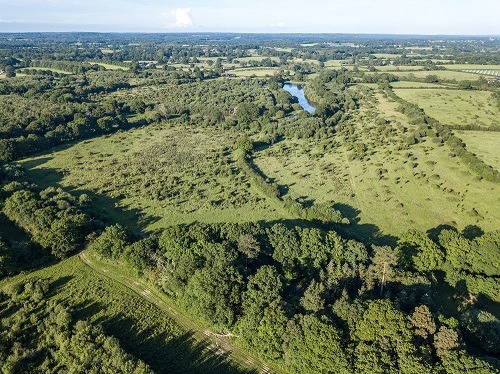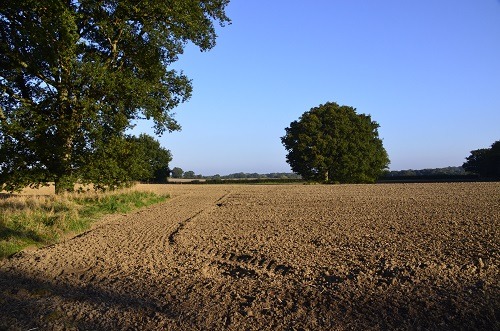Julian Matthews, Chairman TOFTigers asks the question
Let’s do a bit of a comparison. It helps to put India’s conservation efforts in perspective against my own adopted country of Great Britain.
We are winning in the race to the bottom. That’s GB by the way. For all our monetary wealth and our self-styled advanced development, our often trumpeted ‘Green and pleasant hills’ are far from green and far from pleasant. And this is in a country with some of the biggest membership based nature NGO’s on the planet, a society that says it loves animals and wildlife, and spends more on wildlife related holidays than any other populace on the planet.

Infact the United Kingdom is one of the most nature depleted countries in the world. That’s not just me saying it – that’s official. 40 percent of all species are in moderate or steep decline. In 1966 according to the RSPB we had 40 million more birds that we do today. Our skies have literally emptied. But it’s not just the glorious birds we have nailed. Insects have halved, moths have declined by 88%, ground beetles by 72 per cent and butterflies by 76 per cent. Our flora is also failing, down by 1 per cent a year since records began in the 1940’s. Add the unloved lichen, mosses and fungi, most of which we don’t even know, are disappearing fast too. Some of the mammals and birds that were quintessentially English, like red squirrels, turtle doves, hedgehogs, voles and dormice have also become almost as rare as an England World Cup goal.
Now let’s look at the landscapes themselves. We are very proud of our nature reserves, but they only cover 94,400 hectares. That’s miniscule. Some rich individual landowners own nearly as much. Our National Parks, all ten of them – India has 52 Tiger reserves alone, many of far bigger sizes – are extensively grazed by sheep and cattle, managed as grouse moors for expensive shooting parties, and lived in by hundreds of thousands of people, all making a livelihoods out of these ‘living landscapes.’ India by comparison has over 40,500 km2 of National Parks by July 2017, or over 4 million hectares, 1.23 percent of its landmass. Considering the pressures from India’s rural populations that’s still impressive, and unlike us, it still has all of its major predators. By contrast the UK’s wolves, bears, lynx and wolverine populations were on their last legs as a species in the UK by the thirteenth century, with the competition from sheep and our bison and the last wild ox, the Auroch was gone by the 17th century.

Thankfully, against this tide of woe, I have just had the privilege of visiting the only proper rewilding project in England recently – It’s authentic because it’s hands-off conservation. Let nature take its own course with the very least human interventions, bar some ancient grazers like fallow deer and Longhorn cattle (the closest we can get to the Auroch’s, our ancient cattle species). Let some 3500 acres of poor agricultural fields in the South of England literally run wild and see what happens.
It’s 16 years ago now that the visionaries Charlie Burrell and his wife Isabella took the very real plunge to turn their ancestral Knepp Castle estate, 60 kms south of London, into what was effectively a large wholly unknown experiment with the irrepressible forces of nature. That took a shedload of guts. It took some realignment of madcap EU farming regulations. It took an epiphany and it was created by a perfect farming storm. Issy’s new book ‘Wilding’ perfectly described the new dawn. By 2004 Charles realised that his hard learnt modern intensive farming methods were just not working, the estate was losing money, soil fertility was declining horribly and its famous oak forests, used for building Royal Navy battleships, since the reign of King John in the 12th century were in real distress. There must be a better way.
“What would you grandfather say if he saw this now” I asked Charlie as drove me around his wilded estate, where fences have been removed, hedgerows allowed to blossom and what were once regarded as farmlands weeds now carpet his old fields, rare turtle doves nest in his trees, skylarks and woodlarks nest happily in his untrampled grasslands and species declared virtually extinct – like the purple emperor butterfly – now flitter in their thousands.
“He would recognise it from his childhood. Before intensive farming and between the two world wars the farms were in a much better state for nature than they are now. Today with all the pollutants we pour on them, and the ploughing up of topsoil that so destroys the nutrients and fungi that replenishes soils.” He said sagely. “None of this is taught at Agricultural Colleges.” he added. “The joy today is that we now employ far more people than we did as a farm, and our wildlands are economically viable and enjoyed by thousands of people every year.”
Problems sound familiar? Farmers across India face much the same problem, year in year out. Battling droughts and climate change, pests, collapsing prices, mechanisation, economies of scale. The list is endless, but the issues are similar.
So what if we could turn farming on its head in India too? A few are already doing it, rewilding their own small patch of landscape. But imagine if we could combine, join farms collectively together, to do this in a way that is beneficial for both its farmers and for nature, and have some ‘nature stewardship funding’ instead of agricultural subsidies for yet more intensification, more pollutants and more contaminants.
It’s of course easiest to start it around the borders of national parks and other landscapes, where conflict is most intense with nature, because India now have an economy – an extraordinary economy – one that wants to be back in nature – and prepared to pay handsomely for the privilege – it’s called nature tourism. Here in Scotland, the nature based tourism industry is worth nearly £1 billion per year (Crore?) and it doesn’t even have a single predator – so what India’s potential as a world class nature destination on a par with its world class biodiversity (ranked 6th in the world) is anyone’s guess – but we need to change the way we see it, and the way we can afford to finance it – before we can really save it – and ensure it benefit farmers and all the rest of us too.






